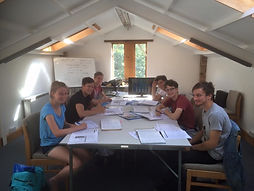Learning to be a certified diver has three phases

-
Phase one: Knowledge development.-This is the theory part of the Open Water Course, and you can opt to learn in the classroom or with PADI eLearning at your own pace from home or wherever you are.
-
Phase two: Confined water-This is where you get to go underwater for the first time! You’ll practice using scuba gear in a pool (or pool-like environment) until you’re comfortable. During the confined water sessions, you’ll learn the basic scuba diving skills in a progressive order, where each skill builds on the ones previous to it. PADI training includes practice “mini dives” to help you build confidence in your new abilities and practice your skills in various scenarios.
-
Phase three: Open water dives-This is the best part – it’s what you’ve been waiting for! The open water portion includes four dives in open (unrestricted water), including bodies of water such as the sea, lake, or flooded quarries.
-
Open Water Diver is the first scuba certification level that allows you to dive independently (with a buddy but without an Instructor or other scuba diving professional). A highly-trained PADI Instructor will teach you to scuba dive in a relaxed, supportive learning environment. By the end of the course, you’ll have the skills and knowledge to dive at home or abroad and be an ambassador for the underwater world.
Heading 5
I'm a paragraph. Click here to add your own text and edit me. It's easy.
Which Padi learning method is right for you?

On The Go
PADI Touch
Tablet-based study tools that Integrate text, images and video into interactive learning experiences.

At Home
PADI E-Learning
Online learning programs that integrate course content with animated images and video
to explain concepts and verify your understanding

With an Instructor
PADI Crew-Pak and DVD Conventional crew paks that contain paper manuals, training aids and optional tools that allow for Inderpendant study



